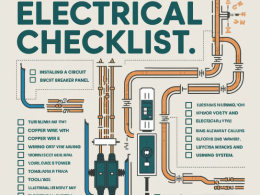Electrical hazards are a significant concern in various industries, including construction, manufacturing, and healthcare. They can cause electrical shock, burns, and even fatalities. In this article, we will discuss the importance of electrical safety and provide examples of electrical hazards.
Electrical safety is crucial in preventing accidents and ensuring the well-being of workers. According to the Occupational Safety and Health Administration (OSHA), electrical hazards are one of the leading causes of workplace injuries and fatalities. In the United States alone, there are over 150,000 electrical injuries each year, resulting in approximately 1,000 fatalities.
The Importance of Electrical Safety
Electrical safety is essential in preventing electrical shock, which can occur when there is a difference in electrical potential between two points. This can happen when there is a fault in the electrical system, such as a short circuit or a ground fault. Electrical shock can cause cardiac arrest, burns, and even death.
Another critical aspect of electrical safety is the prevention of electrical fires. Electrical fires can occur when there is an electrical fault, such as a short circuit or an overloaded circuit. These fires can spread quickly and cause significant damage to property and equipment.
Examples of Electrical Hazards
There are several examples of electrical hazards that can occur in various industries. Some of these include:
1. Faulty Electrical Equipment
Faulty electrical equipment can cause electrical shock, burns, and even fatalities. This can happen when there is a fault in the electrical system, such as a short circuit or a ground fault. It is essential to regularly inspect and maintain electrical equipment to prevent such hazards.
2. Overloaded Circuits
Overloaded circuits can cause electrical fires and electrical shock. This can happen when there is too much electrical load on a circuit, causing it to overheat and potentially start a fire. It is essential to ensure that electrical circuits are not overloaded and that they are regularly inspected and maintained.
3. Poor Electrical Installation
Poor electrical installation can cause electrical shock, burns, and even fatalities. This can happen when electrical wiring is not installed correctly, causing a fault in the electrical system. It is essential to ensure that electrical wiring is installed correctly and that it is regularly inspected and maintained.
4. Electrical Shock from Water
Electrical shock from water can occur when there is a fault in the electrical system, such as a short circuit or a ground fault. This can happen when water comes into contact with an electrical source, causing a shock. It is essential to ensure that electrical equipment is not exposed to water and that it is regularly inspected and maintained.
5. Electrical Fires
Electrical fires can occur when there is an electrical fault, such as a short circuit or an overloaded circuit. These fires can spread quickly and cause significant damage to property and equipment. It is essential to ensure that electrical equipment is regularly inspected and maintained to prevent such hazards.
Prevention and Control Measures
There are several prevention and control measures that can be taken to prevent electrical hazards. Some of these include:
1. Regular Inspection and Maintenance
Regular inspection and maintenance of electrical equipment and wiring can help prevent electrical hazards. This includes checking for faults, ensuring that electrical equipment is properly installed, and ensuring that electrical circuits are not overloaded.
2. Training and Education
Training and education on electrical safety can help prevent electrical hazards. This includes educating workers on the importance of electrical safety, the risks associated with electrical hazards, and the prevention and control measures that can be taken.
3. Personal Protective Equipment (PPE)
Personal protective equipment (PPE) can help prevent electrical hazards. This includes wearing insulating gloves, safety glasses, and hard hats when working with electrical equipment.
4. Electrical Safety Procedures
Electrical safety procedures can help prevent electrical hazards. This includes developing and implementing procedures for electrical safety, such as procedures for inspecting and maintaining electrical equipment, procedures for responding to electrical emergencies, and procedures for reporting electrical hazards.
Conclusion
Electrical hazards are a significant concern in various industries, including construction, manufacturing, and healthcare. They can cause electrical shock, burns, and even fatalities. In this article, we have discussed the importance of electrical safety and provided examples of electrical hazards. We have also discussed prevention and control measures that can be taken to prevent electrical hazards. By following these measures, workers can reduce the risk of electrical hazards and ensure a safe working environment.
References
OSHA. (2022). Electrical Safety. Retrieved from https://www.osha.gov/electrical-safety
National Institute for Occupational Safety and Health (NIOSH). (2022). Electrical Safety. Retrieved from https://www.cdc.gov/niosh/topics/electricalsafety.html







